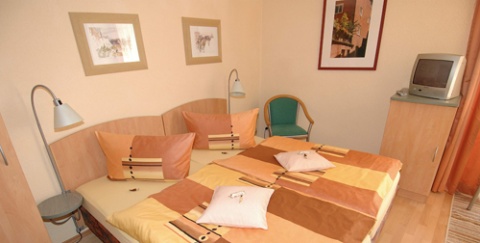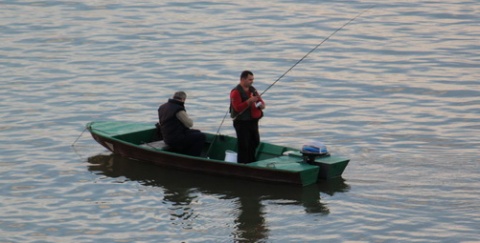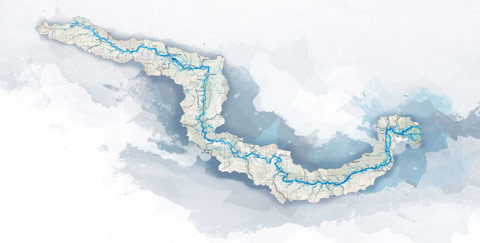
Via Danubia: on the trail of the ancient Romans
The Via Danubia is almost all about the Romans, and even the name is Latin. The Roman Empire left behind many traces along the Danube and this route enables anyone with an interest in history to learn about – and experience – virtually every aspect of Roman culture. ...
City: Passau
Country: Germany
Via Danubia: on the trail of the ancient Romans
The Danube even owes its name to the Romans: back then it was called Danubius, after Danuvius, the god of rivers. It's reason enough to dig a little deeper into this history and discover what fascinating traces of the Romans are still visible today. The idea behind the Via Danubia is the same as that of the Via Claudia Augusta that runs between Füssen and Donauwörth and the Via Raetica between Donauwörth and Kelheim: to create a long-distance cycle route dedicated to the region's ancient history. Via Danubia opened in 2001 as a 220km stretch of the Danube Cycle Route between Bad Gögging and Passau. In 2006 an additional section from Günzburg to Oberndorf am Lech was opened to the public. This stretch lies much further to the west and for the most part runs just south of the Danube.
Most of the Danube region between Bad Gögging and Passau was already populated by Celtic settlers before the Romans occupied it in the classical era. They effectively made the Danube a 'wet frontier' against the notoriously violent Teutons in the north. Today you can see archaeological evidence of the Roman era at various outdoor sites and in many history museums along the Via Danubia. Information boards at 17 different places tell you more about the visible reminders of the region's Roman past. You don't even have to leave Bad Gögging for the first one: a Roman Baths Museum at the site where the Romans bathed in the healing sulphur springs that bubble out of the ground here. And to this day Bad Gögging remains one of Bavaria's top spa resorts. Roman history can also be traced in Regensburg, or Castra Regina as it was then, and in Straubing, Vilshofen and Passau. And dotted between these towns you'll come across remnants of military sites, such as the Roman fort in Steinkirchen or the fort with a neighbouring civilian settlement in Moos-Burgstall. The UNESCO-protected Limes frontier is still clearly visible in Windorf between Künzing and Passau. You can get another good view of this quintessentially Roman relic on the second leg of the Via Danubia, between Oberndorf and Günzburg, a town that emerged from the Roman military camp Guntia. Faimingen's open-air museum at the Apollo Grannus Temple is another of the route's highlights. Grundremmingen was the site of a Roman settlement, Aislingen had a fort, and in Holzheim-Ellerbach and Wertingen-Roggden you can still see the remnants of Roman burial grounds. Burghöfe in Mertingen was the site of another Roman fort, and is also the point where the Via Claudia Augusta ends. The Via Danubia, however, continues to its final checkpoint in Oberndorf, where there is further evidence of earlier Roman settlements. With so many Roman relics to discover along both routes, you might even be fluent in Latin by the time you've finished!
Most of the Danube region between Bad Gögging and Passau was already populated by Celtic settlers before the Romans occupied it in the classical era. They effectively made the Danube a 'wet frontier' against the notoriously violent Teutons in the north. Today you can see archaeological evidence of the Roman era at various outdoor sites and in many history museums along the Via Danubia. Information boards at 17 different places tell you more about the visible reminders of the region's Roman past. You don't even have to leave Bad Gögging for the first one: a Roman Baths Museum at the site where the Romans bathed in the healing sulphur springs that bubble out of the ground here. And to this day Bad Gögging remains one of Bavaria's top spa resorts. Roman history can also be traced in Regensburg, or Castra Regina as it was then, and in Straubing, Vilshofen and Passau. And dotted between these towns you'll come across remnants of military sites, such as the Roman fort in Steinkirchen or the fort with a neighbouring civilian settlement in Moos-Burgstall. The UNESCO-protected Limes frontier is still clearly visible in Windorf between Künzing and Passau. You can get another good view of this quintessentially Roman relic on the second leg of the Via Danubia, between Oberndorf and Günzburg, a town that emerged from the Roman military camp Guntia. Faimingen's open-air museum at the Apollo Grannus Temple is another of the route's highlights. Grundremmingen was the site of a Roman settlement, Aislingen had a fort, and in Holzheim-Ellerbach and Wertingen-Roggden you can still see the remnants of Roman burial grounds. Burghöfe in Mertingen was the site of another Roman fort, and is also the point where the Via Claudia Augusta ends. The Via Danubia, however, continues to its final checkpoint in Oberndorf, where there is further evidence of earlier Roman settlements. With so many Roman relics to discover along both routes, you might even be fluent in Latin by the time you've finished!
DANUBE.TRAVEL has no control over the website content generated by users and/or visitors, neither such content represents a statement, opinion, recommendation or rating by DANUBE.TRAVEL. For further information please refer to DANUBE.TRAVEL – General Website Terms and Conditions of Use.
Places near this location
Where to stay
What to do
Danube experience
My Danube
Trip Plan
Your Trip Plan is currently empty. Add a city, location or route to create your trip plan.
 EN
EN DE
DE









_480x243.jpg)


